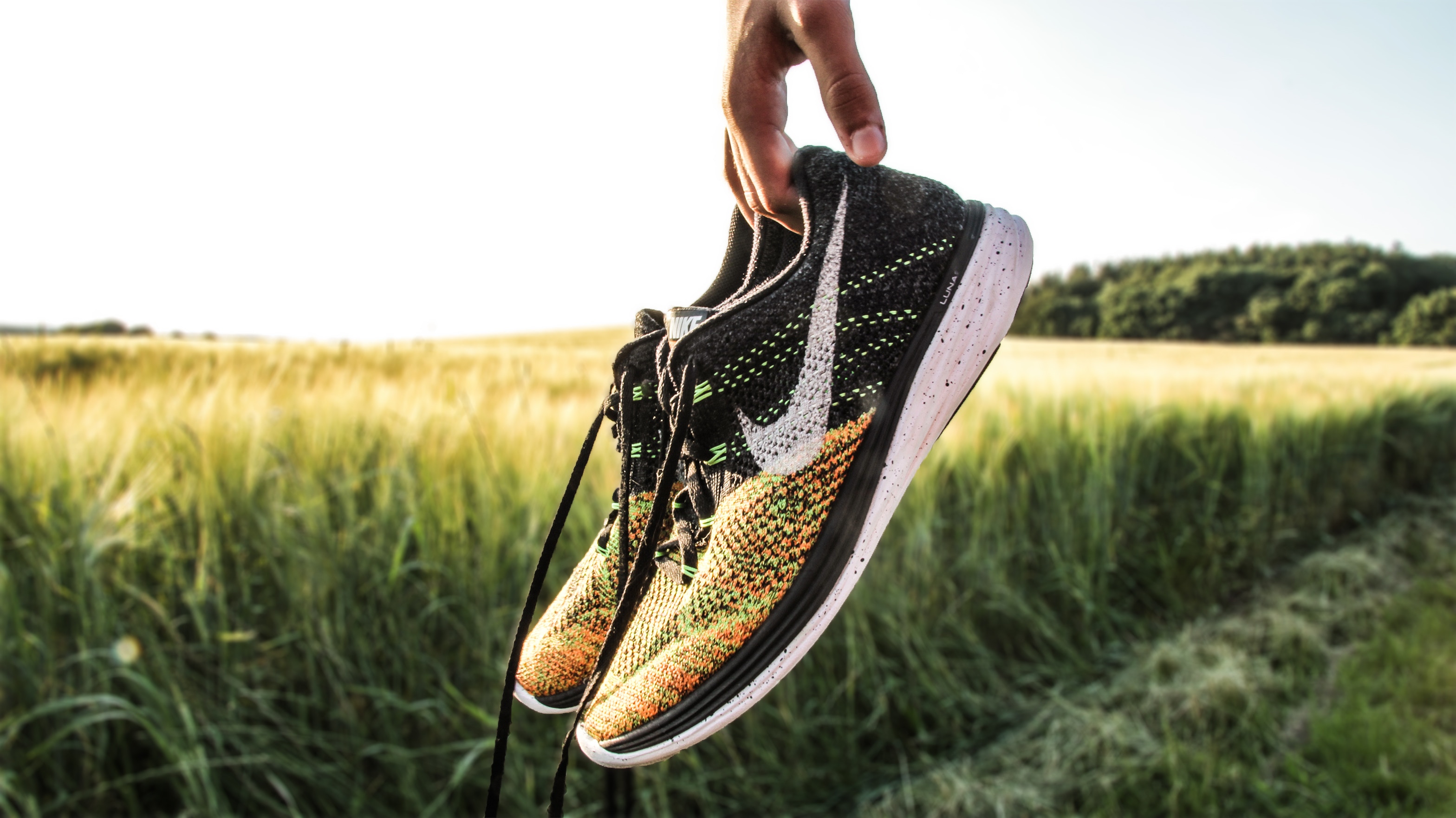
You’ve checked your running form and your feet. All seems well, yet you still have running pain. Have you checked your shoes? Even if you think you have the most supportive and top-of-the-line running shoes, they may still be giving you problems.
Running pain could be the result of many things, from an oncoming to injury to muscle imbalance. While you might be tempted to think the worse, it could simply be due to what you’re wearing on your feet.
In fact, new studies show that your running shoes are linked more than ever to the way you run. This means that your shoes may actually be changing the way you run, contributing to your pain from running as well as raising your risk of injury.
Comfy Isn’t Always The Answer To Running Pain
You know the feeling: mile after mile of being on your feet, pounding the pavement, and they start to hurt. The pain isn’t necessarily from having bad feet, i.e. flat feet or weak arches. You know it’s simply from putting weight on your feet for hours.
Your feet hurt, so you head to the shoe store to find the most comfortable running shoe. One that is cushioned and give enough bounce to take the edge off. However, a new study on the Hoka Conquest shoe – one of the most cushioned shoes on the market – recently discovered that this cushioning and forced bounce might actually be contributing to running injuries and pain. The study found that runners who had a more cushioned shoe were more likely to have shin splints and stress fractures than those who ran in a less bouncy and cushioned shoe.
The reason? Cushioned and bouncy shoes change the way runners are running.
The more cushioned the shoe, the more “false” bounce it creates. This bounce alters the natural bounce a runner has while running. When you run, your legs are naturally creating a bounce through the movements of the knees and feet. To run, you bend your knees and ankles to create the bouncing movement and roll your foot from heel to toe to push forward. However, when you add something unnatural into the mix – like extra bounciness from a shoe – you change your natural running stride. This is what could be contributing to your pain and oncoming injuries.
A Bouncier Shoe = Less Control
The bouncier the shoe, the more likely it is that you won’t be bending your knees and ankles as you should create the bounce since your shoe is doing it for you. The researchers found that those runners with a more cushioned shoe had stiffer legs while running, inhibiting their ability to run correctly and run naturally.
Moreover, the more cushion that’s provided in the shoe, the harder it is to feel your foot placement on the pavement. Without feeling where your foot is landing, you could be rolling your foot without knowing it, landing on the wrong part of the foot. You might also be landing incorrectly.
Although adding cushion to your shoe might help take the edge off of those long miles, it might actually be masking some running form and stride problems until it’s too late.
Your Shoes Are Too Supportive
You’ve probably experienced it before or at least know someone who knows someone who’s experienced it. Shin splints are plaguing you. Plantar fasciitis is reoccurring. Your ankles are also in pain. Instead of heading to a physical therapist, podiatrist, or orthopedic doctor to figure out the problem, you head to a running shoe store. These stores often have “foot experts” who put you through tests that conclude – yep, you have a pronation problem. The answer? Get a more supportive shoe.
So, you get the most supportive shoe on the market. And, the problem gets worse.
This is because a supportive shoe isn’t always the answer. Although your diagnosis might be correct – maybe you do have a pronation problem – support isn’t always the answer. Many times, it’s training your foot to land correctly that’s going to correct your problems.
Furthermore, too supportive of shoes means a stiff shoe. Stiffness means not being able to control your gait. Lack of gait control can lead to more problems than shin splints and ankle pain. It could lead to knee pain and even hip injuries and lower back pain.
When you opt for a more supportive shoe, you’re merely masking the problem of incorrect running form and gait. By training your body to run naturally and correctly and training your feet to land properly, you’ll actually be solving the problem and not merely creating a quick fix.
Handpicked Content: Running Tips From A Physical Therapist An Inside Look At Physical Therapy And Running What Is The Alter-G Anti-Gravity Treadmill?
Get A Proper Diagnosis
If you’re having running the pain, your best option is to get a proper medical diagnosis. Yes, heading to a doctor or physical therapist seems unnecessary if you can still run. After all, it’s just a little pain, right? “Let’s just try the minimal approach first,” you think. However, by not getting someone to look at the whole picture – i.e., your biomechanics, your gait, everything – you’re just delaying the inevitable – more pain and injury.
Before you go buy a new running shoe, have a physical therapist look at the problem first to determine if it really is your feet that’s the problem.
Related Content:
Does Your Running Stride Matter?
Are Feet That Important?
Gait Training: Preventing Injury Through Your Feet


